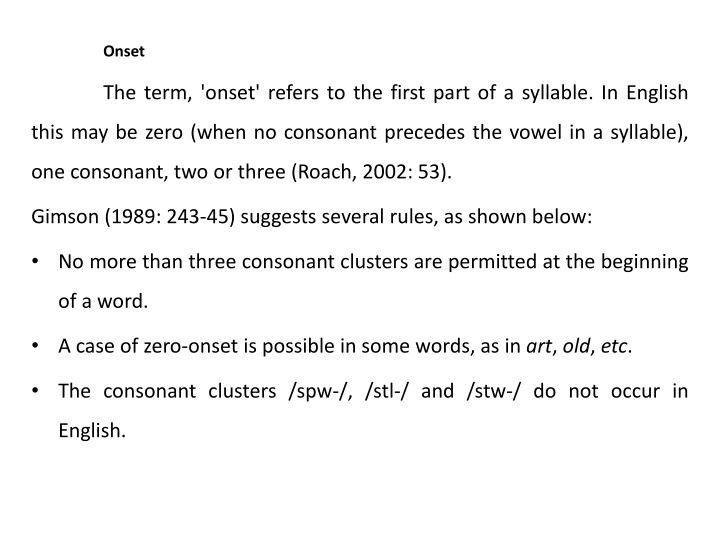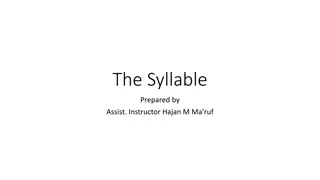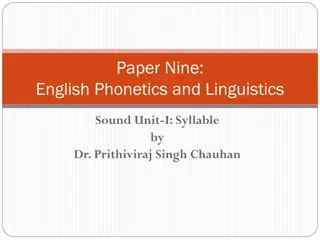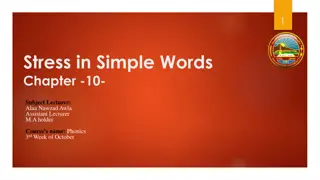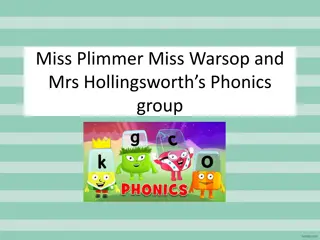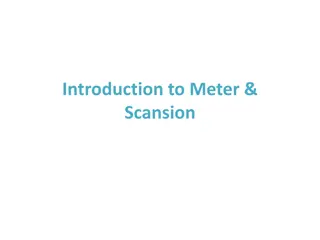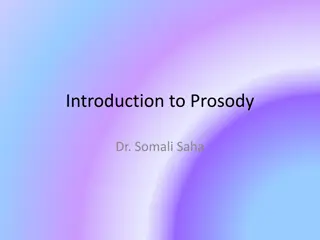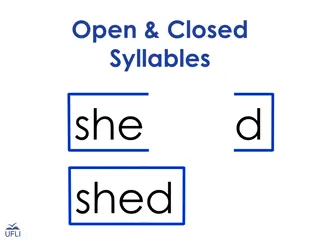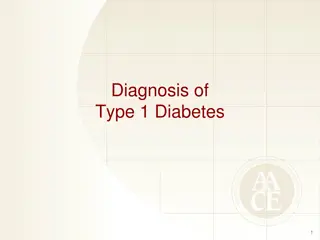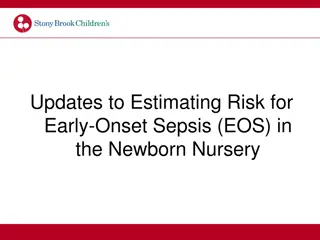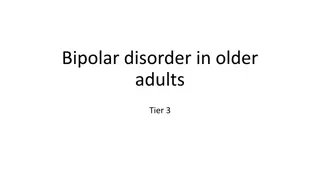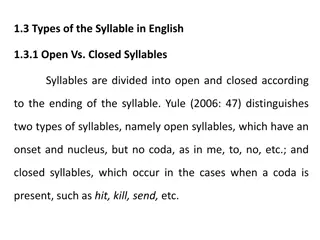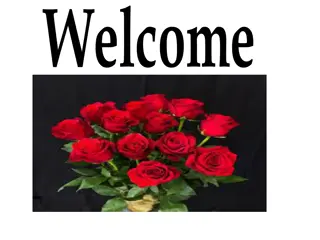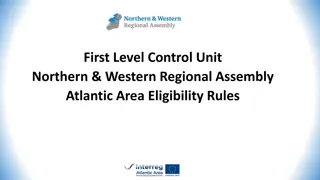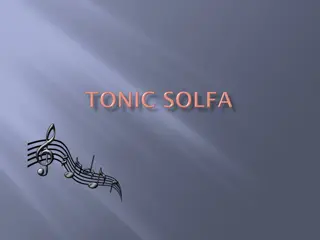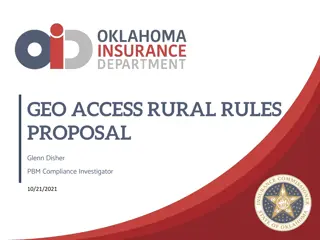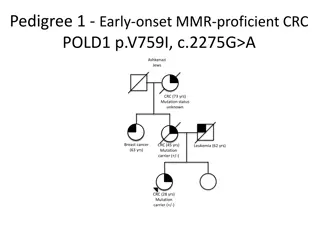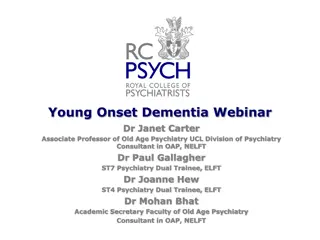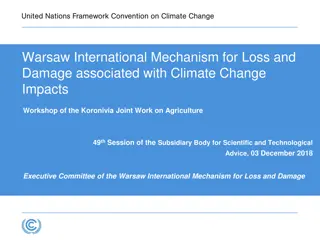Rules and Examples of Onset in English Syllables
The term 'onset' in English syllables refers to the initial part of a syllable, which can vary from zero consonants to a maximum of three. This text provides rules and examples of onset patterns, including permissible consonant clusters and zero-onset cases. It also presents initial CC cluster patterns and details on specific consonant sequences in English syllables. Explore the complexities of onset structure and examples in English pronunciation.
Download Presentation

Please find below an Image/Link to download the presentation.
The content on the website is provided AS IS for your information and personal use only. It may not be sold, licensed, or shared on other websites without obtaining consent from the author.If you encounter any issues during the download, it is possible that the publisher has removed the file from their server.
You are allowed to download the files provided on this website for personal or commercial use, subject to the condition that they are used lawfully. All files are the property of their respective owners.
The content on the website is provided AS IS for your information and personal use only. It may not be sold, licensed, or shared on other websites without obtaining consent from the author.
E N D
Presentation Transcript
Onset The term, 'onset' refers to the first part of a syllable. In English this may be zero (when no consonant precedes the vowel in a syllable), one consonant, two or three (Roach, 2002: 53). Gimson (1989: 243-45) suggests several rules, as shown below: No more than three consonant clusters are permitted at the beginning of a word. A case of zero-onset is possible in some words, as in art, old, etc. The consonant clusters /spw-/, /stl-/ and /stw-/ do not occur in English.
The name of the bird smew/smju:/ provides a single example of the initial sequence /smj-/. When /j/ occurs in the normal initial position after a consonant and before a peak, it occurs only before /u:/ and /u /, as in new /nju:/ and cure /kju (r).
The initial possible CC clusters patterns are as follows: /p/+ /l/, /r/, /j/, as in play, pride and pure. /t/+ /r/, /j/, /w/, such as true, turn, and twin. /k/+ /l/, /r/, /j/, /w/, i.e., clear, cry, cure and quick. /b/+ /l/, /r/, /j/, like blue, break and bureau. /d/+ /r/, /j/, /w/, e.g., dry, due and dwell. /g/+ /l/, /r/, /w/, as in glow, green and guava. /m/+ /j/, such as mute.
/n/+ /j/, e.g., new. /l/+ /j/, as in lure. /f/+ /l/, /r/, /j/, such as flower, friend and few. /v/+ /j/, like view. / /+ /r/, as in through. /s/+ /l/, /w/, /p/, /t/, /k/, /m/, /n/, /f/, e.g., slow, swear, spy, stick, sky, smart, snow and sphere. / /+ /r/, like shrink. /h/+ /j/, as in huge.
/s/ is the only English consonant that can occur before all vowels (Internet Ref. No. 7). A syllable may end with the sequence nd, but it cannot start with it (Dalton and Seidhofer, 1994: 36). All the consonants occur as the first element in the initial two-element consonant clusters except /z, r, d , , and / (ibid.).
